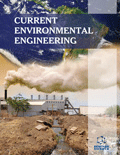Abstract
Textile mill discharges contain total dissolved solids (TDS), suspended solids (SS), complex dyes, odor, and total Kjeldahl nitrogen, bleaching chemicals and an array of pollutants that exert biological oxygen demand (BOD) and chemical oxygen demand (COD). In addition, salts, surfactants, heavy metals and mineral oils are also present in these wastewaters. The presence of color in wastewaters is due to the discharge of unfixed dyes which after hydrolysis are incapable of reacting with the fabrics. Discharge of untreated textile mill effluents is known to cause adverse environmental impacts. Therefore, it is mandatory to treat such wastewaters for the protection of environment and ecosystems. Textile dyeing wastewaters are usually treated to reduce conventional pollution loads such as BOD, COD, SS etc. However, specific pollutants such as dyes, heavy metals and electrolytes are not easily removed by conventional waste treatment methods. This review article provides updated description and analyses of physical, chemical and biological methods that have been used for the removal and degradation of textile dyes. However, each method presents disadvantages and thus there is no suitable method for the removal of dyes from textile dyeing effluents. Hybrid treatment schemes which carefully integrate appropriate physical, chemical and biological decolorization methods for specific industrial discharges are required for the successful removal of dyes. Selected methods should meet the following criteria for effective field scale applications: (a) non-specific with respect to various types of dyes and (b) result in complete elimination of dyes and (c) cost effective and rapid.
Keywords: Advanced, catalysis, biological, decolorization, degradation, dyes, hybrid, oxidation, reduction, textile, treatment.
 13
13

